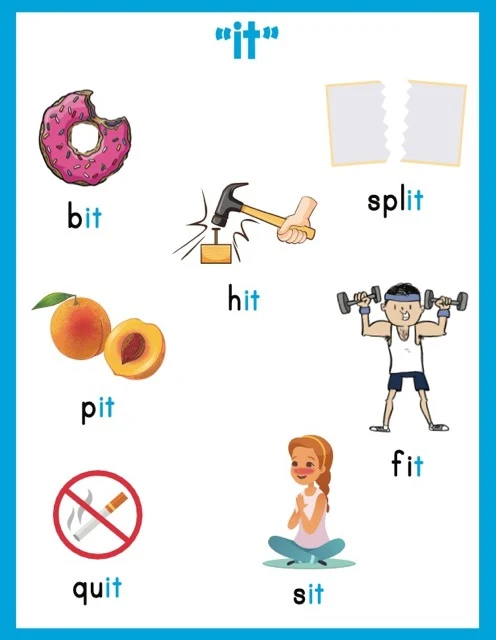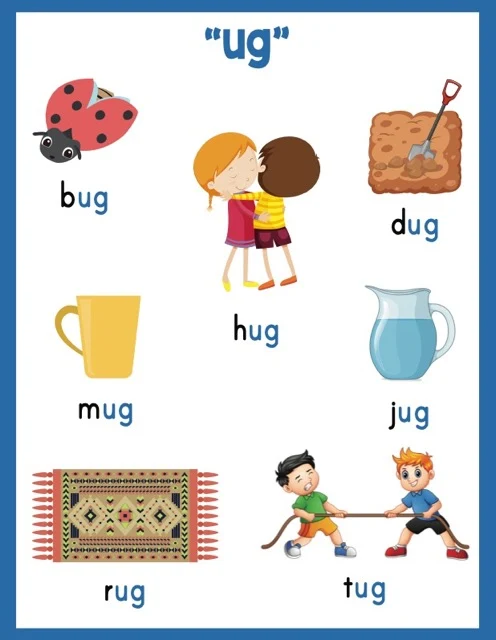Teaching Word Families to Young Learners
This document details the importance of teaching word families—groups of words sharing a common base, vowel sound, and spelling pattern—to young learners. It emphasizes the crucial role word families play in developing reading, spelling, and vocabulary skills, highlighting effective teaching strategies such as using visual aids and games. The text differentiates word families from rhyming words and explores how understanding word families improves decoding skills and spelling abilities. Finally, it suggests further research into effective teaching methods and assessment strategies for this crucial literacy skill.
Teaching Word Families
Briefing Doc: Word Families
Main Themes:
●
Definition and Importance: Word families are groups of words sharing a common base/root, vowel sound, and spelling pattern (e.g., "cat," "hat," "mat" in the "-at" family). They are crucial for developing reading, spelling, and vocabulary skills in young learners.
●
Teaching Strategies: Effective methods include visual aids like flashcards and charts, games (rhyming bingo, matching), and encouraging sentence creation using word families.
●
Relationship to Phonics and Reading Fluency: Understanding phonics, the relationship between letters and sounds, is foundational to word family learning. Recognizing word family patterns boosts decoding skills and reading fluency.
●
Impact on Vocabulary Development: Word families provide a framework for learning new words by building upon known patterns and expanding vocabulary systematically.
Key Facts and Ideas:
●
Word families vs. Rhyming words: While rhyming words share the same ending sound, word families share a base/root, vowel sound, and spelling pattern. "Cat" and "bat" rhyme, but belong to different families.
●
Spelling Improvement: Word families aid spelling by enabling children to deduce spelling based on known words within the family (knowing "cat" helps spell "hat").
●
Diverse Exposure: Exposure to both common and less common families ensures a well-rounded vocabulary, preparing children for diverse words encountered in reading and writing.
●
Resources: Educational stores and online platforms offer abundant resources (charts, flashcards, games, activities) to support educators in teaching word families effectively.
Supporting Quotes:
●
Definition: "A word family is a group of words sharing a common base or root, with the same vowel sound and spelling pattern." (Word Family Mastery: A Study Guide)
●
Benefits: "Learning word families improves reading and spelling skills by helping children decode new words and understand the relationship between letters and sounds." (Word Family Mastery: A Study Guide)
●
Teaching Strategies: "Use flashcards or picture cards to introduce new word families... Create word family charts or posters... Play word family games..." (Word Families: A Comprehensive Guide)
●
Difference from Rhyming: "A word family is a group of words that share a common base or root word, and have the same vowel sound and spelling pattern. Rhyming words share the same ending sound, but they may not have the same spelling pattern or belong to the same word family." (Word Families: A Comprehensive Guide)
●
Spelling Improvement: "Once your child understands the concept of word families, they can use this knowledge to spell new words." (Word Families: A Comprehensive Guide)
Visual Examples:
●
The document "Testing Theme: Word Families.pdf" provides visual examples of various word families categorized by vowel sounds and accompanying illustrations.
Further Research:
●
Phonics instruction and word families: Explore how explicit phonics teaching enhances word family understanding.
●
Effective teaching methods for different learning styles: Investigate differentiated approaches to cater to diverse learning needs.
●
Assessment strategies for word family knowledge: Develop methods to evaluate student understanding and track progress.
●
Digital resources and interactive tools: Explore online platforms and applications that offer engaging word family activities.
Word Families: A Comprehensive Guide
Word Families FAQ
What is a word family?
A word family is a group of words that share a common base or root word, and have the same vowel sound and spelling pattern. For example, the words cat, hat, and mat all belong to the -at word family.
Why are word families important?
Learning word families helps children:
●
Improve their reading and spelling skills
●
Expand their vocabulary
●
Decode new words more easily
●
Understand the relationship between letters and sounds
How can I teach word families?
●
Use flashcards or picture cards to introduce new word families
●
Create word family charts or posters
●
Play word family games, such as rhyming bingo or word family matching
●
Encourage children to read books that feature words from the same family
●
Help children create their own sentences using words from different word families
What are some examples of word families?
Here are a few examples of common word families:
●
-at: cat, hat, mat, rat, sat
●
-an: can, fan, man, ran, van
●
-et: bet, get, jet, let, met
●
-in: bin, fin, pin, sin, win
●
-op: hop, mop, pop, stop, top
What is the difference between a word family and a rhyme?
A word family is a group of words that share a common base or root word, and have the same vowel sound and spelling pattern.
Rhyming words share the same ending sound, but they may not have the same spelling pattern or belong to the same word family. For example, cat and bat rhyme, but they belong to different word families (-at and -bat).
How can I use word families to help my child with spelling?
Once your child understands the concept of word families, they can use this knowledge to spell new words. For example, if they know how to spell cat, they can easily spell hat, mat, and other words in the -at family.
How many word families are there?
There are many different word families in the English language. Some word families are very common, while others are less common. The number of word families that a child needs to learn will depend on their age and reading level.
Are there resources available to help me teach word families?
Yes! There are many resources available to help you teach word families. You can find word family charts, flashcards, games, and activities online and in educational stores.
Word Family Mastery: A Study Guide
Word Family Mastery: A Study Guide
Short Answer Quiz
Instructions: Answer each question in 2-3 sentences.
1.
Define a word family.
2.
Explain two benefits of learning word families for young learners.
3.
Describe two teaching strategies for introducing new word families.
4.
Give three examples of word families that use the short "a" sound.
5.
Explain the difference between a word family and rhyming words. Provide an example.
6.
How can understanding word families improve spelling skills?
7.
Using the "Testing Theme" document, identify two word families that share the same vowel sound but different consonants.
8.
From the provided sources, identify three activities that can help reinforce word family learning.
9.
Why is it important to expose children to both common and less common word families?
10.
What type of resources can assist educators in teaching word families?
--------------------------------------------------------------------------------
Short Answer Key
1.
A word family is a group of words sharing a common base or root, with the same vowel sound and spelling pattern. Example: "cat," "hat," and "mat" belong to the "-at" word family.
2.
Learning word families improves reading and spelling skills by helping children decode new words and understand the relationship between letters and sounds. It also expands their vocabulary by providing a framework for learning new words.
3.
Flashcards or picture cards can visually introduce new word families. Word family charts or posters provide a visual reference and reinforce patterns.
4.
-at: cat, hat, mat; -an: can, fan, man; -ag: bag, tag, wag.
5.
Word families share a base or root word and the same vowel sound and spelling pattern, while rhyming words only share the same ending sound. "Cat" and "bat" rhyme but belong to different word families ("-at" and "-bat").
6.
By recognizing patterns within word families, children can deduce the spelling of new words based on known words. For example, knowing how to spell "cat" aids in spelling "hat" or "mat."
7.
Two examples from the "Testing Theme" document are "-in" (fin, pin, win) and "-en" (pen, hen, ten). Both use the short "e" sound but have different ending consonants.
8.
Rhyming bingo, word family matching, and encouraging children to create sentences using words from different families are beneficial activities.
9.
Exposure to both common and less common word families ensures a well-rounded vocabulary and prepares children for encountering diverse words in reading and writing.
10.
Word family charts, flashcards, games, activities (online or in stores), and educational books support educators in teaching word families effectively.
--------------------------------------------------------------------------------
Essay Questions
1.
Discuss the role of phonics instruction in teaching word families. How does understanding phonics support word family learning?
2.
Analyze the relationship between word family knowledge and reading fluency. Explain how recognizing word families contributes to fluent reading.
3.
Evaluate the effectiveness of different approaches to teaching word families. Which methods do you consider most beneficial for different learning styles and age groups?
4.
Explore the connection between word families and vocabulary development. How does learning word families facilitate the acquisition of new vocabulary words?
5.
Develop a lesson plan for introducing a specific word family to a group of young learners. Outline the activities, materials, and assessment strategies you would employ.
--------------------------------------------------------------------------------
Glossary of Key Terms
Word Family: A group of words sharing a common base or root word, with the same vowel sound and spelling pattern.Base Word: The core part of a word that gives it its basic meaning. Other letters can be added to the base word to change its meaning.Root Word: Similar to a base word, but often derived from another language (e.g., Latin or Greek).Vowel Sound: The sound produced by vowels (a, e, i, o, u) and sometimes by combinations of vowels.Spelling Pattern: A consistent combination of letters that represents a specific sound or group of sounds.Phonics: A method of teaching reading and spelling that focuses on the relationship between letters and sounds.Rhyming Words: Words that share the same ending sound, regardless of spelling or word family.Decoding: The process of using knowledge of letter-sound relationships to read written words.Vocabulary: The collection of words that a person knows and understands.Reading Fluency: The ability to read accurately, quickly, and with expression.





















